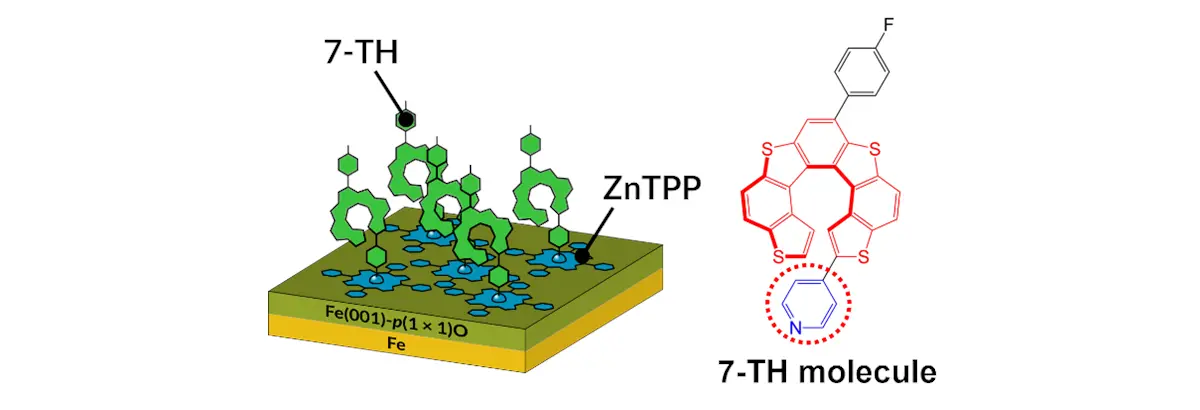Start
28/09/2023
End
28/02/2026
Status
In progress
FUTURO
Start
28/09/2023
End
28/02/2026
Status
In progress
FUTURO

The FUnctionalized surfaces by True molecUlar bottom-up gROwth (FUTURO) project introduces a new two-step strategy to build large, ordered films of molecules with the same handedness (homochirality) through vacuum evaporation of selected molecular species. The process, as illustrated in the accompanying schematic, begins with a single layer of zinc tetraphenyl porphyrins (ZnTPP) deposited on an iron surface protected by oxygen atoms, namely, the Fe-p(1×1)O surface. This oxygen layer prevents the porphyrins from losing their chemical and electronic properties as a result of the interaction with the reactive Fe surface, while at the same time allowing them to move and self-assemble into a highly ordered structure over millimeter scales. The porphyrins lie flat on the surface, leaving their central metal atom available to bind additional molecules. In the second step, this porphyrin layer acts as a template for chiral molecules. In FUTURO, specially designed helicene derivatives (7-TH), functionalized with pyridine groups (highlighted in the schematic), are synthesized and then attached to zinc porphyrins through chemical coordination.
The bilayer will be studied with X-ray absorption spectroscopy (to confirm coordination), photoemission and inverse photoemission (to measure electronic levels), and scanning probe microscopy (to directly visualize structure and morphology). Theory will complement the experiments by clarifying how pyridine groups anchor to porphyrins and by quantifying the coordination strength.
FUTURO aims to demonstrate, for the first time, the realization of a long-range homochiral film fabricated by a bottom-up growth technique that relies exclusively on chemical coordination between organic molecules. By inserting a single oxygen layer between the film and the metal, the approach completely decouples the functional film from the substrate, paving the way for exploiting its intrinsic chemical and electronic properties.
Research team
Principal Investigator (PI) and responsible for POLIMI research unit:
Substituted PI and responsible for CNR research unit:
Responsible for UNIMI research unit:
Associated investigators:
Postdoctoral research fellows:
Research labs
VESI
Find out more